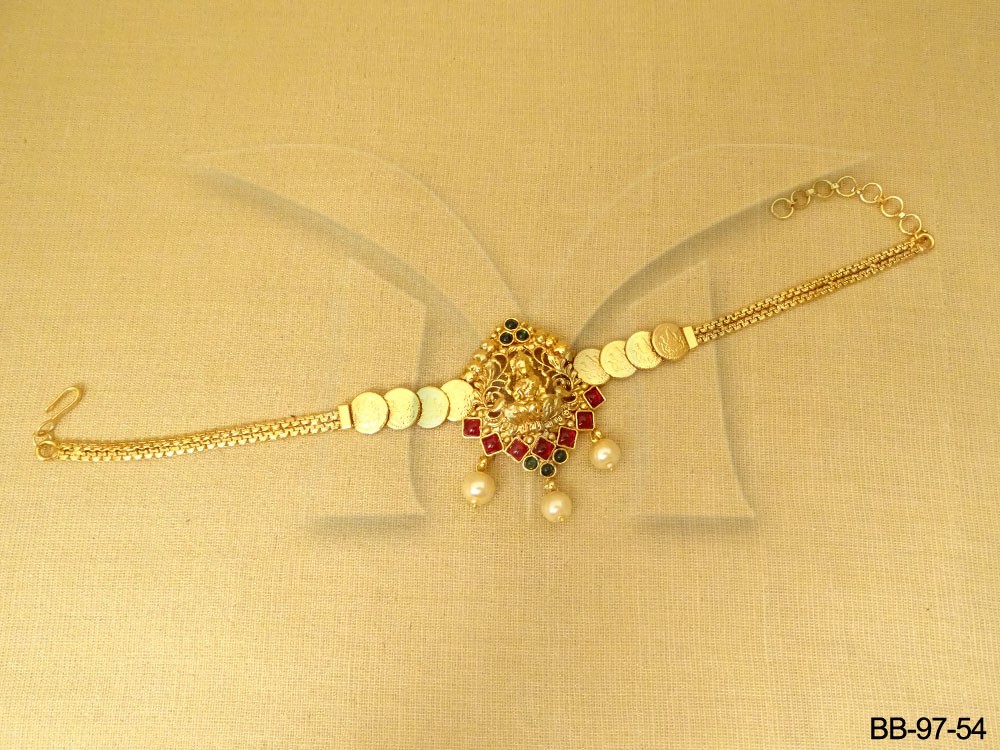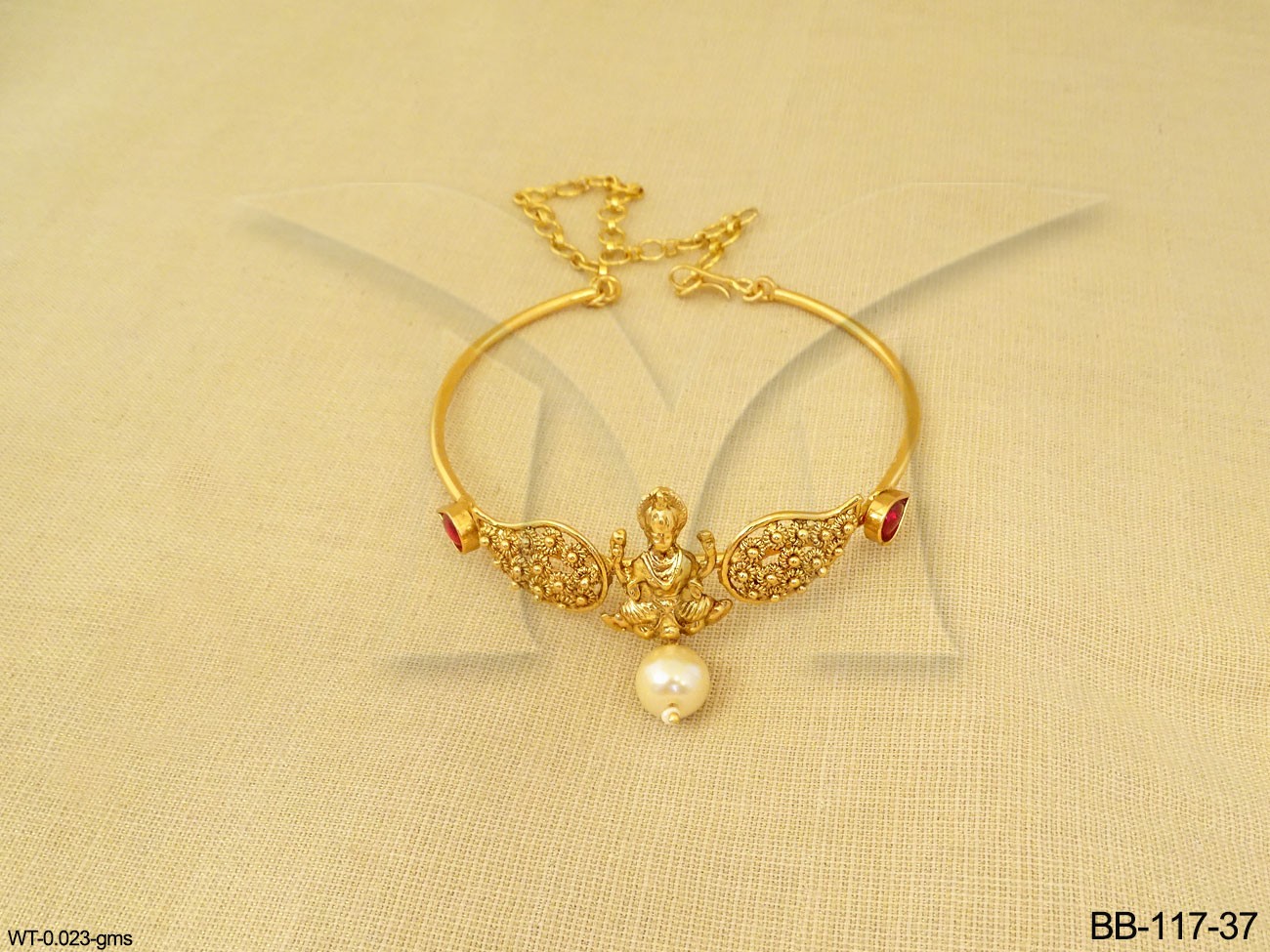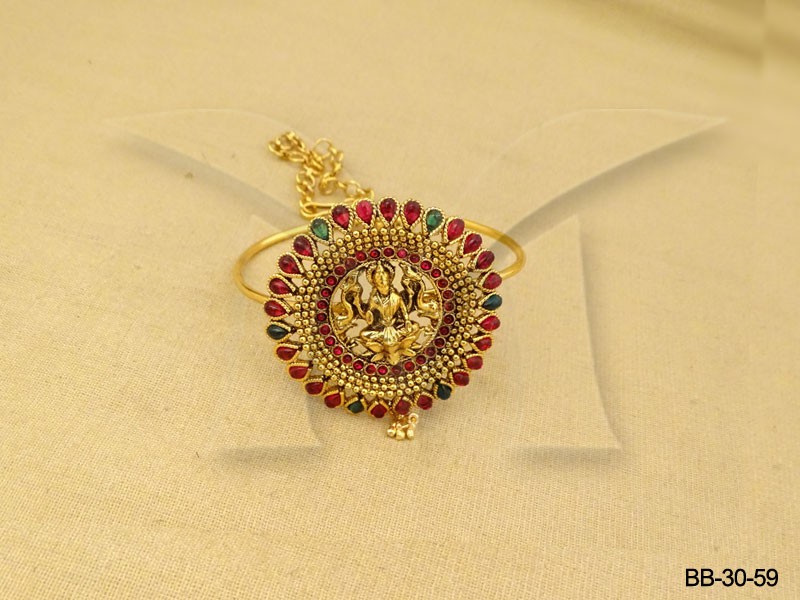South Indian Temple Bajuband
South Indian Temple Bajuband industry is much varied in styles and designs in accordance to the different regions. South Indian Temple Bajuband has the unique design to the state and are not found anywhere else in the world. For example the delicate filigree work in silver which is unique to Odisha and Andhra Pradesh; Rajasthan is popular for South jewellery
Even during ruling empires the rich kings wore jewellery that made them look like Gods. Every big and small piece of adornment was made of gold and precious stones like rings, earrings, bangles, chains, crowns, anklets, etc. For past many years India has been ruled by different empires. All these empires have left an incredible mark on the jewellery styles. The Mughals had their own distinctive style of using precious stones and intricate carvings, the Rajputs had their enameled jewellery and so on.
In today’s modern world though many new and sophisticated styles have emerged to urban centers, the traditional style of jewellery is in vogue and is usually the first choice in jewellery. In the contemporary Indian market one would find beautiful blend of traditional and modern jewellery in gold and silver that are decorated with gorgeous precious stones that always attract and amuse buyers.





